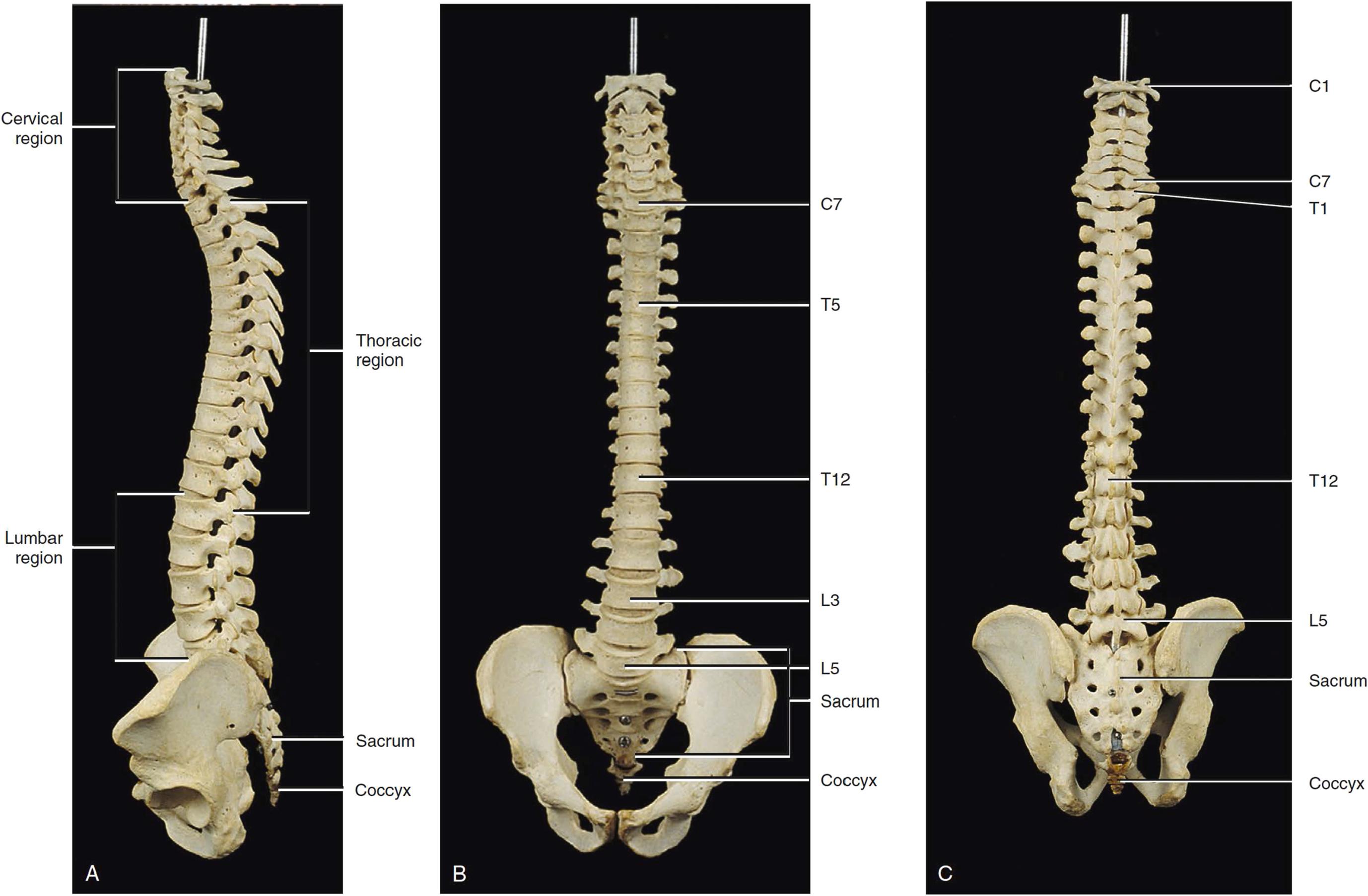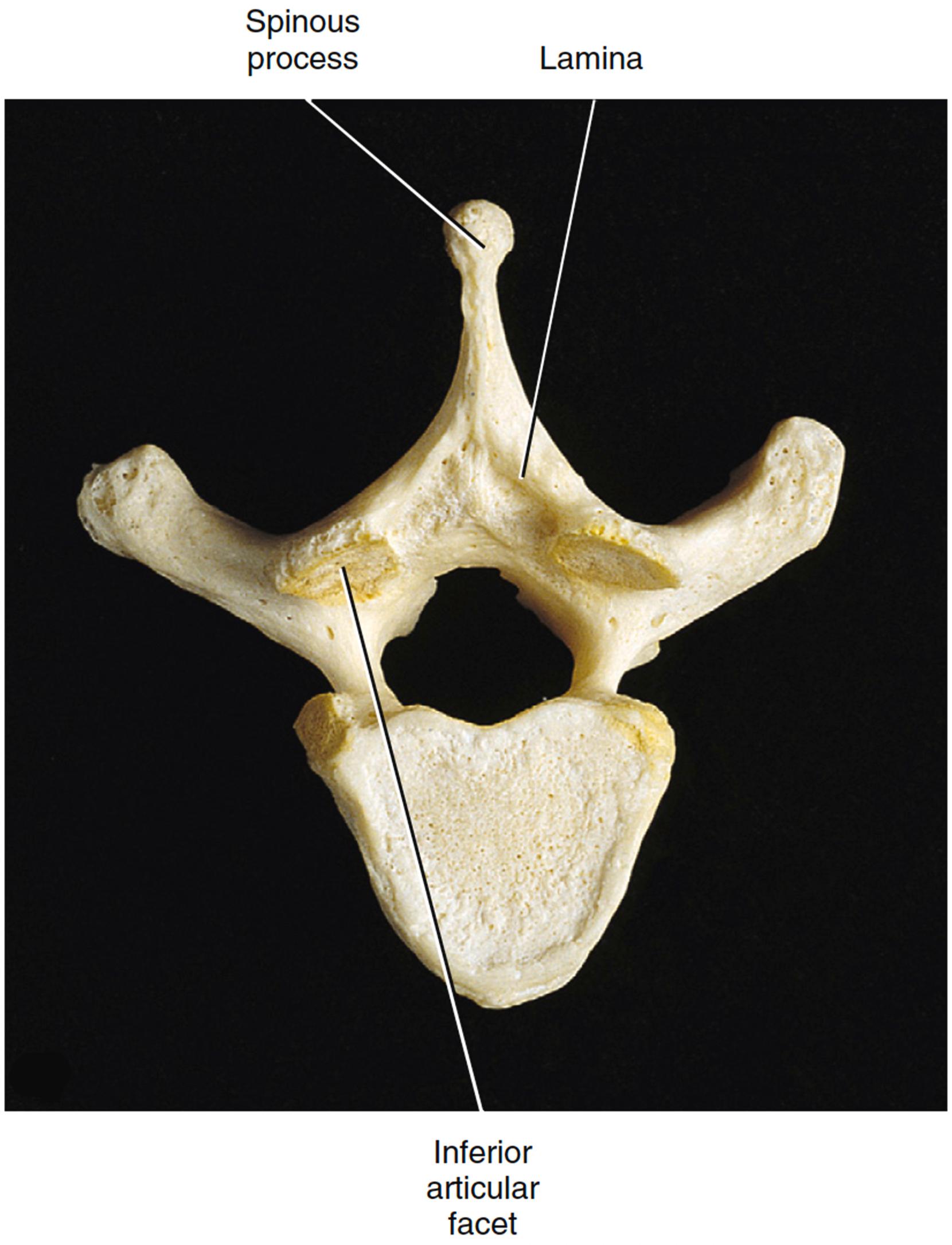Physical Address
304 North Cardinal St.
Dorchester Center, MA 02124
Intimate relationships between osseous, nervous, vascular, and soft tissue structures of the spine are critical to normal function.
A thorough understanding of these relationships is essential to the comprehension of spinal pathology and its surgical management as well as the avoidance of dire consequences.
Distinct morphology along the spinal column allows for unique characteristics at diverse levels of the spine, defining normal function in locomotion, ventilation, and neuronal control.
A thorough understanding of spinal anatomy requires comprehension of the intimate relationships that exist between neurovasculature, osseous components, and soft tissue throughout the spine. A heterogeneous structure, the spine is a unique structure as segmental anatomy varies extensively throughout its 33 levels. Subtle differences in structure throughout the length of the spine must be fully understood to treat pathology effectively at any given level.
As the spine extends caudally, 31 pairs of spinal nerve roots emanate from the spinal cord, beginning cranial to the first cervical vertebrae and ending with a pair of nerves leaving the coccyx. While both spinal column and cord project from the foramen magnum of the skull, the spinal cord generally tapers as the conus medullaris at the level of the L1–L2 intervertebral disc in adults (range T12-L3); while the osseous spine continues to project caudally culminating in the coccyx. Nerve roots projecting from the conus medullaris form the cauda equina, a collection of axonal structures traveling caudally within the spinal canal to traverse vertebral foramina at each respective lumbar level.
Each vertebra, with the exception of the sacrum, coccyx and first two cervical vertebrae, follows a basic structure [ , ]. As is true with all biology, structure defines function, and the spine is no exception. Spinal anatomy will be illustrated with an emphasis on relevant structures in this chapter, highlighting osseous structures and their articulations, neuroanatomy, ligaments, muscles, relevant vasculature, and surrounding soft tissue.
Superiorly, the spinal column articulates with the occiput and terminates caudally as the coccyx near the anus. Each vertebra (fused coccyx considered as a whole) consists of a central canal and contributes to bilateral intervertebral (IV) foramina, allowing for the spinal cord and its projections to travel from the brain to target destinations in a coordinated fashion. Although symmetric under normal circumstances in the coronal plane, the spinal column, depicted in Fig. 1.1 , is not rigid or perfectly linear in the sagittal plane but curved. Normal curvature includes cervical lordosis, thoracic kyphosis, lumbar lordosis, and sacral kyphosis (see Chapter 16 ) [ ]. Although debated, mean cervical lordosis has been reported as approximately 40 degrees, with most lordosis occurring at the C1-2 level [ ]. Thoracic kyphosis ranges from 20 degrees to 50 degrees, and lumbar lordosis ranges from 40 degrees to 60 degrees. As illustrated in Fig. 1.1 , the sagittal axis runs from the odontoid process of C2 through the C7-T1 intervertebral disc (IVD) (see Chapter 6 ), anterior to the thoracic spine, through the T12-L1 IV disc, posterior to the lumbar spine, through the lumbosacral joint, and anterior to the rest of the column starting at S2 [ ].

The basic vertebral structure consists of an anterior body and posterior arch with a central canal as displayed in Fig. 1.2 . Vertebral bodies increase in size caudally. Arches consist of lateral pedicles, the strongest components of vertebrae, and posterior laminae. At the interface of the pedicle and lamina, or isthmus, lie the superior and inferior articular processes forming the facet or zygapophyseal joint, and the laterally projecting transverse process. Together with the vertebral body and pedicle, the facet joint (see Chapter 14 ) forms the IV foramen through which the nerve roots exit. Finally, the spinous process projects posteriorly from the fused midline between laminae, increasing in size from the cervical to lumbar spine [ ]. Between the vertebrae are the IVDs, representing 25% of total spinal height, but gradually declining characteristically with aging (see Chapter 6, Chapter 7 ) [ ]. In regards to classification and stability in the face of fracture, the spine is divided into three columns [ ]. The anterior column consists of the anterior longitudinal ligament (ALL) and anterior two-thirds of the vertebral body/IVD, the middle column the posterior longitudinal ligament (PLL) and posterior one-third of the vertebral body/IVD, and the posterior column the pedicles, lamina, spinous and articular processes, and ligaments (see Chapter 12 ).

Become a Clinical Tree membership for Full access and enjoy Unlimited articles
If you are a member. Log in here